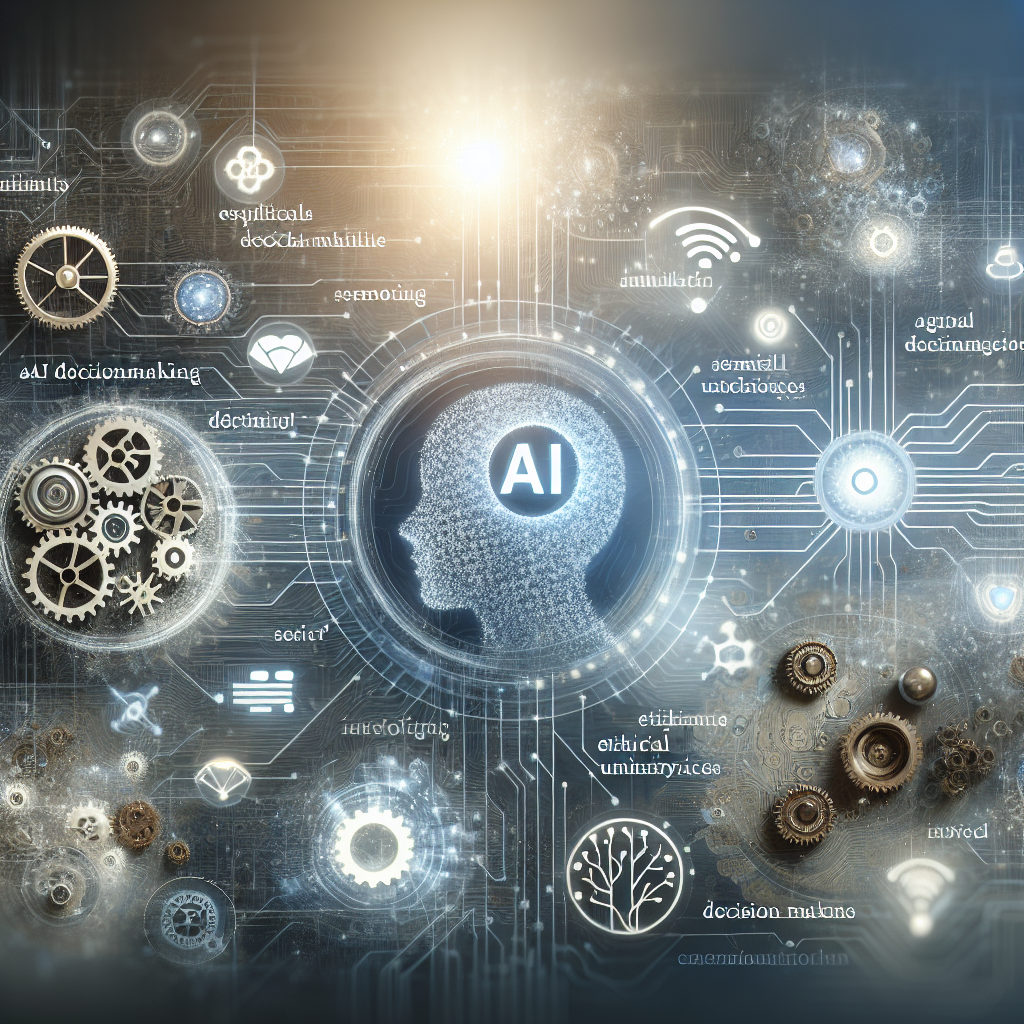Artificial Intelligence (AI) has become an integral part of our daily lives, from the recommendations we receive on streaming platforms to the personalized advertisements we see on social media. AI has also been increasingly used in decision-making processes, from healthcare to finance to criminal justice. While AI has the potential to improve efficiency and accuracy in decision-making, it also poses ethical risks that must be carefully considered.
One of the main ethical risks of AI in decision-making processes is bias. AI algorithms are only as good as the data they are trained on, and if this data is biased, the AI system will also be biased. For example, a study by ProPublica found that a popular AI software used in the criminal justice system to predict future criminals was biased against black defendants, leading to harsher sentencing outcomes for them compared to white defendants. This bias can perpetuate existing inequalities and injustices in society.
Another ethical risk of AI in decision-making processes is lack of transparency. AI algorithms can be complex and opaque, making it difficult for users to understand how decisions are being made. This lack of transparency can lead to a lack of accountability, as it is difficult to hold AI systems responsible for their decisions. This can be particularly problematic in high-stakes decision-making processes, such as in healthcare or finance, where decisions can have life-altering consequences.
Furthermore, AI systems can also lack empathy and human judgment, leading to decisions that may be technically correct but morally wrong. For example, a self-driving car may be programmed to prioritize the safety of its passengers over that of pedestrians, raising ethical questions about the value of human life. Similarly, AI systems used in healthcare may prioritize cost-efficiency over patient well-being, leading to decisions that prioritize profit over ethics.
To address these ethical risks, it is essential to ensure that AI systems are designed and implemented in a way that upholds ethical principles and values. This includes ensuring that AI systems are transparent and accountable, that biases are minimized or eliminated, and that human oversight and judgment are integrated into decision-making processes.
One way to mitigate bias in AI systems is to ensure that diverse and representative data sets are used for training. This can help reduce the risk of bias by ensuring that the AI system is exposed to a wide range of perspectives and experiences. Additionally, regular audits and reviews of AI systems can help identify and address biases that may have crept into the system over time.
Transparency in AI systems can be achieved through the use of explainable AI techniques that provide insights into how decisions are being made. This can help build trust in AI systems and ensure that users can understand and challenge decisions when necessary. Additionally, creating clear guidelines and standards for the use of AI in decision-making processes can help ensure that ethical principles are upheld.
Human oversight and judgment are also crucial in ensuring that AI systems make ethical decisions. While AI can process vast amounts of data and make decisions quickly, human judgment is still necessary to ensure that decisions are aligned with ethical values and principles. Integrating human oversight into AI systems can help ensure that decisions are made with empathy and consideration for moral implications.
In conclusion, while AI has the potential to revolutionize decision-making processes and improve efficiency, it also poses ethical risks that must be carefully considered. By addressing issues such as bias, lack of transparency, and lack of empathy in AI systems, we can ensure that AI is used in a way that upholds ethical principles and values. Ultimately, it is essential to strike a balance between the benefits of AI and the ethical considerations that come with its use in decision-making processes.
FAQs:
Q: How can bias be minimized in AI systems?
A: Bias can be minimized in AI systems by ensuring that diverse and representative data sets are used for training, conducting regular audits and reviews of AI systems, and implementing fairness and accountability measures in the design of AI algorithms.
Q: What are some examples of bias in AI systems?
A: Examples of bias in AI systems include the use of biased data sets that result in discriminatory outcomes, such as in the criminal justice system where AI algorithms have been found to be biased against black defendants.
Q: How can transparency be achieved in AI systems?
A: Transparency in AI systems can be achieved through the use of explainable AI techniques that provide insights into how decisions are being made, as well as by creating clear guidelines and standards for the use of AI in decision-making processes.
Q: Why is human oversight important in AI systems?
A: Human oversight is important in AI systems to ensure that decisions are made with empathy and consideration for moral implications, as well as to provide a check on the decisions made by AI algorithms. Human judgment is still necessary to ensure that decisions align with ethical values and principles.

